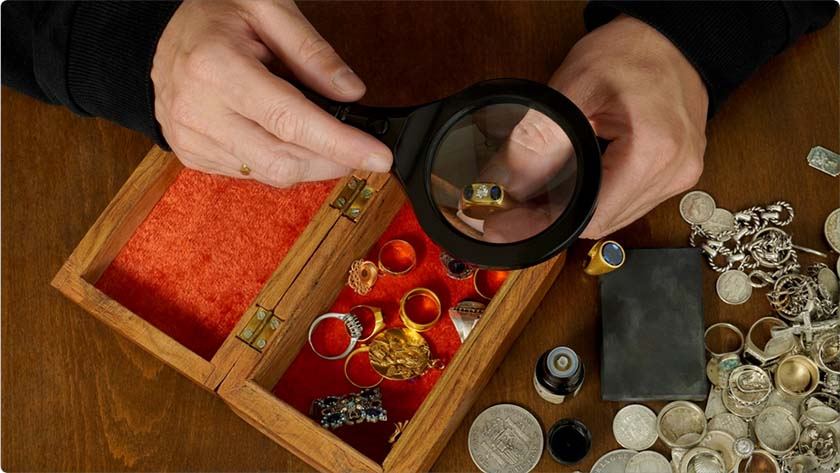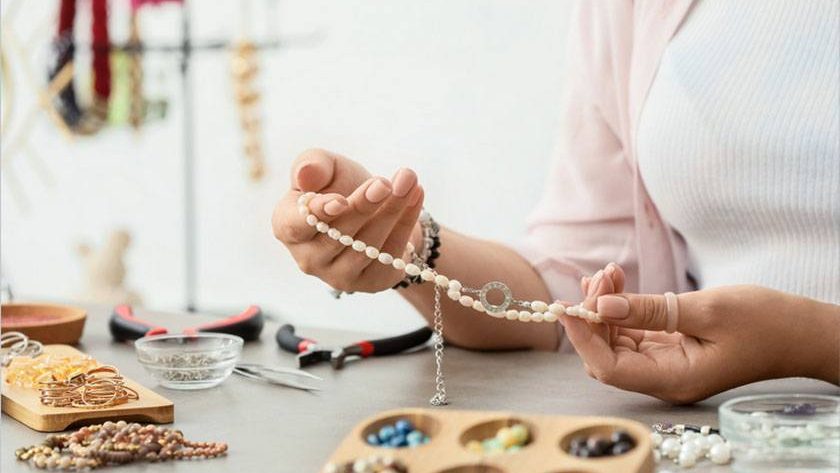Selling jewelry can be a rewarding endeavor – however, maximizing profit necessitates a strategic approach. This guide examines the most effective methods for selling your pieces, taking into account current market trends and identifying your target buyers.
Understanding the best way to sell jewelry involves evaluating critical factors, including the quality and condition of your jewelry, as well as its current market value.
Additionally, this guide will present various selling options and practical advice to ensure you derive the maximum benefit from your valuable items. Whether you possess vintage heirlooms or contemporary designs, this guide will assist you in navigating the jewelry market with confidence.
What Is the Best Way to Sell Jewelry for Maximum Profit?
Selling jewelry for maximum profit requires a comprehensive understanding of market dynamics and the implementation of effective strategies tailored to resonate with the target audience.
By concentrating on pricing strategies, selecting appropriate e-commerce platforms, and addressing the emotional components of buyer psychology, one can develop a compelling sales funnel that effectively attracts potential buyers and enhances sales performance.
Regardless of whether the focus is on handcrafted jewelry, antique pieces, or luxury items, adopting a strategic approach is essential for optimizing profit margins.
Understanding the Market for Jewelry
A thorough understanding of the jewelry market necessitates an in-depth analysis of current trends, consumer behavior, and effective market research to engage the appropriate target audience.
Expertise in jewelry valuation is essential for establishing competitive pricing, whether one is dealing with vintage pieces or contemporary designs. This knowledge can greatly enhance the selling strategy and improve the likelihood of capitalizing on high-demand styles.
What Are the Current Trends in the Jewelry Market?
Current trends in the jewelry market indicate a significant demand for unique designs, ethical sourcing, and luxury items, particularly within the realm of handcrafted jewelry. Consumers are increasingly favoring pieces that convey a narrative and reflect their personal values, which has resulted in a heightened demand for sustainable and ethically sourced materials.
By comprehending these trends, sellers can find the best way to sell jewelry by identifying high-demand styles and adjusting their offerings accordingly. For example, handcrafted jewelry crafted from recycled metals and conflict-free gemstones is gaining popularity, appealing to consumers who prioritize authenticity and sustainability in their purchasing decisions.
This shift not only strengthens customer loyalty but also motivates artisans to innovate and create more bespoke pieces that align with buyers’ ideals. Styles characterized by intricate craftsmanship and personalized elements, such as engraved names or significant symbols, are establishing new standards in luxury.
As the market continues to evolve, the importance of transparency in sourcing practices becomes crucial, allowing discerning consumers to make informed choices that reflect their ethical beliefs.
Who Are the Target Buyers for Jewelry?
Identifying target buyers for jewelry is crucial for developing effective marketing and sales strategies, as different demographics exhibit distinct consumer behaviors regarding jewelry purchases.
Jewelry collectors typically seek unique designs and investment potential, whereas occasion-driven buyers may prioritize emotional appeal and personal significance. Understanding these buyer personas enables businesses to engage effectively with their audience and enhance customer loyalty.
For example, millennials are increasingly inclined towards ethically sourced pieces, which reflect their values related to sustainability and social impact. In contrast, baby boomers often emphasize heritage and craftsmanship, gravitating towards classic styles that embody tradition.
By recognizing these distinctions, jewelry marketers can tailor their strategies accordingly, crafting narratives that resonate on a personal level. Emotional selling not only attracts interest but also strengthens connections, creating lasting impressions that frequently lead to sales.
As consumer buying decisions become more influenced by lifestyle and individual narratives, it is imperative to develop relevant messaging to succeed in this competitive landscape.
Factors to Consider Before Selling Jewelry
Before engaging in the sale of jewelry, it is essential to consider several critical factors to optimize profit margins and effectively appeal to potential buyers.
The best way to sell jewelry involves considering factors such as the valuation of the jewelry, an assessment of each piece’s condition, and an understanding of current market demand.
Additionally, implementing effective inventory management and pricing strategies can significantly impact the success of the selling process.
What Is the Quality of Your Jewelry?

Conducting thorough jewelry appraisals can assist in establishing a fair market price and appealing to discerning buyers. A comprehensive understanding of how these elements interact can significantly enhance one’s appreciation of jewelry.
For instance, intricately crafted pieces composed of high-quality materials tend to retain their value more effectively over time. This principle is particularly applicable to unique designs that differentiate themselves in the marketplace, thereby attracting the attention of collectors and connoisseurs.
Buyers often seek guarantees of authenticity and quality, underscoring the importance of comprehensive appraisals. A detailed appraisal not only elucidates key attributes but also fosters trust, ultimately shaping buyer perception and enhancing both current and future resale potential.
What Is the Demand for Your Jewelry?
Understanding the demand for jewelry is essential for making informed selling decisions and maximizing profitability. Conducting market research allows for the identification of high-demand styles and seasonal sales trends, which can significantly influence product offerings.
Recognizing niche markets can present valuable opportunities to cater to specialized audiences. This comprehensive analysis involves gathering data through surveys, online feedback, and competitor evaluations.
By employing trend analysis, one can uncover emerging patterns that indicate shifts in consumer preferences, ensuring that the product lineup remains relevant and appealing.
Grasping the impact of seasonal sales is crucial it not only aids in predicting peak purchasing times but also informs inventory management decisions, helping to mitigate both overstock and stockouts.
The best way to sell jewelry in a competitive marketplace is by staying ahead of design trends, especially during peak seasons when certain styles become highly sought after, effectively distinguishing a brand.
What Is the Current Market Value of Your Jewelry?
Determining the current market value of jewelry is essential for developing effective pricing strategies and ensuring competitive positioning. Jewelry valuation must take into account various factors, including craftsmanship, materials, and prevailing market conditions.
Conducting a competitor analysis can also yield valuable insights into how similar pieces are priced within the market. Understanding the methodologies for establishing this market value is crucial, particularly when utilizing appraisal techniques that assess individual characteristics such as cut, clarity, and overall aesthetic appeal.
By comparing these elements with current market trends, one can gain a clearer understanding of demand fluctuations and their effect on pricing strategies. Staying attuned to market conditions facilitates more informed decisions regarding resale value.
When evaluating competitors, analyzing their positioning is vital for refining pricing strategies, ensuring relevance, and enhancing appeal to potential buyers. This approach ultimately contributes to the development of a more profitable jewelry portfolio.
What Is the Condition of Your Jewelry?
The condition of jewelry significantly impacts its appeal and market value. Ensuring that pieces are clean and well-maintained not only enhances their attractiveness but also boosts customer satisfaction.
Properly showcasing these qualities through high-quality product photography is essential for highlighting their condition to potential buyers. Ahead of listing items for sale, it is imperative for sellers to dedicate time to necessary repairs and comprehensive cleaning.
This practice not only preserves the item’s allure but also conveys to buyers that the jewelry has been well-cared-for and is deserving of their investment.
When showcasing jewelry online, clear and well-lit images are essential, as they allow potential buyers to evaluate every detail. Capturing the brilliance of gemstones and the luster of metals plays a crucial role in influencing purchasing decisions, ultimately ensuring that the product’s market value accurately reflects its true condition.
Options for Selling Jewelry

To gain a comprehensive understanding and make an informed decision that aligns with your selling objectives, check out the best ways to sell jewelry for maximum earnings.
Selling to a Jewelry Store
Selling to a jewelry store can be an efficient method for liquidating pieces quickly, often taking advantage of established wholesale opportunities and direct sales relationships.
While the profit margin may be lower compared to selling directly to consumers, the convenience and speed of this option can be particularly appealing for those seeking to minimize customer engagement.
Collaborating with a jewelry store frequently results in strong relationships that can enhance future selling opportunities. Jewelry stores possess established clientele and effective marketing channels, facilitating access to a broader audience without the necessity for extensive advertising.
However, it is crucial to consider these advantages in light of potential drawbacks, such as diminished control over pricing and branding.
Unlike direct sales, where personal customer engagement fosters loyalty and valuable feedback, this approach may offer limited interaction, leaving the seller with insufficient insights into customer preferences and market trends.
Selling Online
Selling jewelry through e-commerce platforms and specialized jewelry marketplaces enables sellers to reach a global audience and engage directly with customers.
Implementing effective digital marketing strategies can enhance visibility and attract potential buyers, making this approach a compelling option for maximizing profits and expanding brand reach.
The best way to sell jewelry today involves choosing from a variety of e-commerce platforms, each offering unique features tailored to specific audiences, from handmade artisan sites to larger retail giants.
These platforms not only streamline the selling process but also provide tools for analytics and tracking customer engagement, allowing sellers to refine their strategies.
By leveraging social media and content marketing, sellers can establish a more personal connection with their audience, fostering customer loyalty in ways that traditional advertising methods cannot achieve.
Understanding customer behavior through these platforms is essential, as it enables sellers to tailor their inventory and promotions effectively.
Selling at a Local Market or Fair
Selling jewelry at a local market or craft fair presents a distinctive opportunity for community engagement and direct interactions with customers. This face-to-face selling approach facilitates emotional connections, as sellers can articulate the story behind their pieces, thereby enhancing their appeal to potential buyers.
By highlighting craftsmanship and the inspiration behind each design, sellers can cultivate a deeper relationship with customers. These interactions promote trust and loyalty, encouraging patrons not only to make purchases but also to become repeat buyers and advocates for the brand.
Engaging with the local community allows sellers to align with shared values and interests that resonate with potential customers, thereby amplifying the overall allure of the jewelry.
Emotional narratives elevate the perceived value of the pieces, transforming a standard transaction into a meaningful experience that leaves a lasting impression.
Selling at Auctions
Selling jewelry at auctions can be a compelling strategy to reach high-end buyers, particularly for unique designs and luxury items. Bidding auctions generate a sense of urgency, which can drive up prices, making this approach a viable option for individuals seeking to maximize profits on exclusive pieces.
A thorough understanding of the auction process is crucial for anyone considering this avenue. The best way to sell jewelry is through auctions, which provide a platform where collectors and enthusiasts convene, creating an optimal environment for showcasing distinctive items.
To effectively engage potential customers, it is beneficial to highlight the craftsmanship and narrative behind each piece, fostering emotional connections. Strategic marketing efforts, such as promotional previews and the use of social media, can significantly enhance visibility.
Encouraging competitive bidding not only adds an element of entertainment for participants but can also substantially elevate final prices, ensuring that sellers receive a reward commensurate with the quality and rarity of their jewelry.
Tips for Maximizing Profit when Selling Jewelry
Maximizing profit in the jewelry sales industry necessitates a comprehensive approach that encompasses thorough market research, effective presentation techniques, and strong negotiation skills.
By gaining insights into current trends and buyer psychology, one can customize their selling strategy to align with customer expectations, thereby enhancing satisfaction and ultimately achieving higher profit margins.
Research the Market and Demand
Conducting comprehensive market research is imperative for understanding demand and identifying prevailing jewelry trends that can influence profit margins. Analyzing competitors offers valuable insights into pricing strategies and highlights which styles are resonating with consumers.
By examining competitors’ product offerings, marketing tactics, and customer feedback, one can develop a thorough understanding of the market landscape. Identifying trends not only informs design decisions but also aids in anticipating consumer preferences.
Employing tools such as surveys, social media analytics, and sales data provides a deeper comprehension of market dynamics. The insights derived from this research facilitate the development of a more tailored selling strategy, enabling businesses to adjust their pricing and product features to effectively meet the evolving needs of the market.
Clean and Repair Your Jewelry
Cleaning and repairing jewelry is essential for enhancing product presentation and ensuring customer satisfaction. Well-maintained pieces not only exhibit greater visual appeal but also command higher prices in the market, thereby reflecting their excellent condition.
Proper care significantly contributes to the longevity and aesthetic value of these items, fostering a lasting impression on potential buyers. When customers encounter jewelry that sparkles and shines, their perception of quality is instantly elevated, making them more inclined to make a purchase.
Conversely, pieces that show signs of neglect can deter buyers, as they may question the value and integrity of what they observe. By routinely addressing maintenance through comprehensive cleaning and timely repairs, sellers can enhance perceived value and maximize the selling potential of their offerings.
Consider the Timing of Your Sale
The best way to sell jewelry is to time a sale strategically, as specific seasonal sales and market trends can generate increased interest and maximize success. Effective inventory management enables strategic planning of selling periods to coincide with peak demand.
Recognizing these critical periods not only maximizes revenue but also enhances customer engagement by ensuring that desired products are readily available. For example, promotions during holidays such as Valentine’s Day or Christmas capture consumer attention and lead to a significant increase in sales.
Aligning inventory levels with these trends helps prevent stockouts or overstock situations, both of which can be detrimental.
By understanding the audience’s purchasing habits and adapting to the cyclical nature of demand, businesses can develop a proactive strategy that ensures optimal performance during the most profitable times of the year.
Present Your Jewelry Well

The visual appeal of jewelry plays a significant role in influencing purchasing decisions, thus necessitating meticulous attention to detail in display techniques.
Thoughtful arrangements and strategic lighting not only emphasize the unique craftsmanship of each piece but also create an inviting atmosphere that attracts shoppers.
Photography that captures the intricate details and brilliance of the jewelry can leave a lasting impression across digital platforms.
When these elements – visual merchandising and photography – are combined, they create a canvas upon which emotional narratives are illustrated.
By integrating personal stories or experiences into product descriptions, sellers can evoke feelings that resonate with customers, ultimately enhancing the shopping experience and fostering brand loyalty.
Negotiate and Be Flexible
Possessing strong negotiation skills and a willingness to demonstrate flexibility can significantly enhance the selling experience and optimize profit margins.
The best way to sell jewelry involves a comprehensive understanding of buyer psychology and an openness to discussions, which can facilitate successful transactions and elevate customer satisfaction.
By actively listening to clients and identifying their specific needs, sellers are able to tailor their proposals in a manner that resonates more profoundly with potential buyers.
This adaptability not only reflects a thorough understanding of market dynamics but also fosters a rapport that is essential for building trust.
Consequently, effective selling techniques transcend mere transactions and develop into the cultivation of long-term relationships.
When sellers prioritize the concerns of their customers and adjust their strategies accordingly, they are better equipped to navigate challenges, ultimately maximizing profitability while delivering valuable solutions that resonate with their audience.

